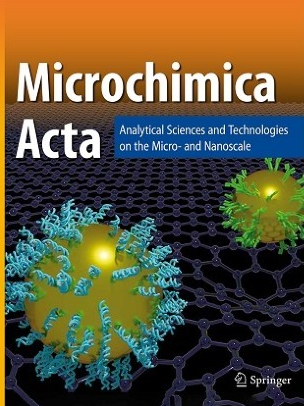Water-stable Eu(III) coordination polymer-based ratiometric fluorescence sensor integrated with smartphone for onsite monitoring of doxycycline hydrochloride in milk
Abstract
The widespread misuse of doxycycline hydrochloride (Dox) in livestock farming has necessitated the development of rapid and reliable methods for monitoring its residues in food products. Herein, a water-stable europium coordination polymer-Eu(C2O4)1.5(H2O)ₙ (Eu-CP) with a layered structure was synthesized via a one-step hydrothermal approach. Leveraging its dual-emission properties (455 nm ligand-centered blue emission and 615 nm Eu(III)-based red emission), we engineered a ratiometric fluorescence sensor (I₆₁₅/I₄₅₅) for Dox detection. The sensing mechanism involves synergistic effects of the antenna effect and Dox@Eu-CP complexation, enabling selective Dox recognition with a wide linear range (10–100 μM) and a low detection limit (0.46 μM, S/N = 3). To facilitate onsite analysis, a smartphone-integrated platform was developed, translating the Dox concentration-dependent color transition (blue → red) into quantifiable R/G values via a custom Android application. Practical applicability was demonstrated in milk samples, achieving recoveries of 82.4–119.4% (fluorescence) and 87.8–113.3% (smartphone) with RSD < 5%. This work pioneers the integration of lanthanide coordination polymers with portable digital detection, offering a green and visual strategy for antibiotic residue monitoring in food safety.
Graphical Abstract

 求助内容:
求助内容: 应助结果提醒方式:
应助结果提醒方式:


